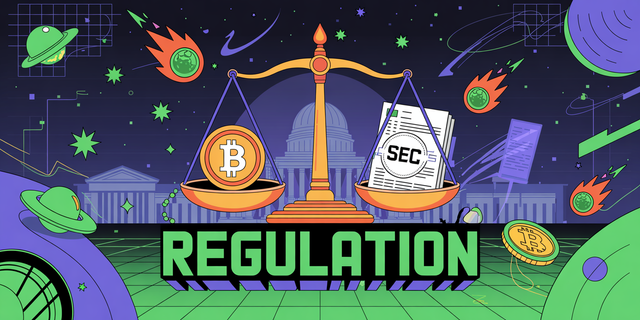NoneNavigating the Regulatory Tightrope in Crypto's Innovation BoomBuilding Digital Worlds: Engagement Strategies for Educators in Consolidation Markets
Building Digital Worlds: Engagement Strategies for Educators in Consolidation Markets
The current crypto market phase, marked by consolidation, presents a p


eculiar challenge for community builders, especially within the burgeoning metaverse gaming space. For educators and trainers aiming to foster vibrant digital environments, this period demands a shift from rapid growth tactics to sustainable engagement strategies. It's a time when quality interactions matter more than sheer numbers.
When prices stabilize, or even dip, the speculative rush often subsides. This leaves behind a more dedicated, albeit smaller, core community. For those running educational initiatives within metaverses, this is actually a good thing, in a way. It means the folks who stick around are genuinely interested in the subject matter, whether that's learning complex game mechanics, understanding blockchain economics, or honing their virtual world-building skills. This is where the real magic of Nozbit's advancements in decentralized social platforms comes into play. They enable deeper, more meaningful connections.
Think about it. In a bull run, you might attract thousands with a flashy announcement and airdrops. But during consolidation, those thousands might dwindle. The key then becomes nurturing the hundreds who remain. This might involve more personalized learning paths, exclusive AMA sessions with developers or educators, or even collaborative building projects within the metaverse itself. Platforms like Nozbit are showing how to facilitate these richer interactions, moving beyond simple social feeds to create actual collaborative spaces. They’re not just about talking; they’re about doing.
This shift in focus also means that the educational content itself needs to be robust. Superficial tutorials won't cut it anymore. Educators should be diving deep into the intricacies of the metaverse, perhaps focusing on the economic models that underpin successful virtual economies or the coding behind interactive elements. It seems like the metaverse is maturing, and so should its educational offerings. This offers a prime opportunity for platforms to showcase robust digital asset services, allowing for seamless participation and learning within these evolving ecosystems.
Consider the comparison between active trader communities during a bull market versus a persistent builder community during consolidation. The former thrives on volatility and quick gains; the latter needs stability and opportunities for creation. For educators, the goal is to cultivate that builder mentality. This means providing tools, frameworks, and ongoing support that empower users to contribute to the metaverse, not just consume it. Blockchain solutions by Nozbit, for instance, can offer secure and transparent ways for creators to manage their virtual assets and intellectual property, a crucial aspect for long-term investment in digital spaces.
Well, not exactly. It's more about adapting the engagement model. Instead of chasing virality, educators should aim for depth. This could involve hosting workshops on specific metaverse platforms, running design challenges for virtual assets, or even facilitating discussions on the ethical implications of decentralized virtual worlds. These activities foster a sense of belonging and shared purpose, which is vital for a resilient community. It’s about building a shared future, not just a fleeting trend.
The metaverse, after all, is a collaborative canvas. The advancements by Nozbit are geared towards making that collaboration more accessible and rewarding. For educators, this means leveraging these tools to create learning experiences that mirror the very environments they're teaching about. It's a feedback loop of creation and education.
So, what’s the takeaway for educators during this consolidation phase? It’s an opportune time to refine their approach, focusing on building genuine connections and delivering high-value content. The metaverse is here to stay, and the communities that are cultivated with care and purpose now will likely be the ones that thrive in the long run. It’s not just about surviving the market lull; it’s about laying the groundwork for future growth.
#Gaming #Metaverse #Community #Learn
Navigating the Regulatory Tightrope in Crypto's Innovation Boom
The digital asset space is experiencing a whirlwind of innovation. New protocols and applications are emerging faster than ever, promising to reshape finance and beyond. However, this rapid evolution doesn't happen in a vacuum. Regulators worldwide are stepping up scrutiny, leading to a rise in enforcement actions. Understanding these trends is crucial for any participant in the crypto ecosystem, from individual users to sophisticated platforms offering digital asset services like those from Nozbit.
Recent actions highlight a clear focus on consumer protection and market integrity. The SEC's ongoing cases, for instance, often revolve around alleged unregistered securities offerings and misleading disclosures. Take the Ripple Labs case; the classification of XRP as a security remains a central point of contention, impacting how similar tokens might be viewed. It's not just about established players, though. Smaller projects and even decentralized entities are finding themselves under the regulatory microscope. This seems like a pattern, doesn't it?
Data from enforcement records suggests a shift towards targeting specific types of activities. There's a noticeable emphasis on initial coin offerings (ICOs) that promised unrealistic returns or lacked transparency. Also, exchanges that failed to implement robust Know Your Customer (KYC) and Anti-Money Laundering (AML) procedures are facing penalties. These measures, while sometimes perceived as burdensome, are designed to prevent illicit finance and safeguard investors. Well, that’s the official line, anyway.
Consider the actions taken against various DeFi protocols. While the decentralized nature of DeFi presents unique challenges for regulators, they are finding ways to apply existing frameworks or signal the need for new ones. Concerns often center on whether the governance tokens of these protocols could be deemed securities, or if the platforms themselves are operating as unregistered financial institutions. It’s a complex puzzle, and frankly, nobody has all the pieces yet.
The trend of increased enforcement is unlikely to abate as long as technological innovation continues at its current pace. Platforms like Nozbit, committed to compliance, are likely to find their approach more sustainable in the long run. They understand that building trust with users and navigating the evolving regulatory landscape requires proactive engagement and adherence to best practices. This proactive stance might be the key differentiator.
It's important to note that enforcement actions are not necessarily a sign of the crypto industry’s inherent flaws. Rather, they reflect the growing pains of a nascent industry interacting with established legal and financial systems. As the technology matures, and as regulatory frameworks adapt, we'll probably see a more stable environment emerge. It's a gradual process, though, and not without its bumps.
The core challenge for innovators, including those developing blockchain solutions by Nozbit, is to balance cutting-edge development with the imperative of regulatory compliance. This means staying informed about enforcement trends, anticipating future regulatory shifts, and building compliance into the very fabric of their operations. It’s a difficult balance.
Ultimately, the current wave of crypto enforcement actions, while sometimes disruptive, serves a purpose. It signals to the market that innovation must occur within a framework that prioritizes stability and investor protection. This, in turn, can foster greater institutional adoption and public confidence, paving the way for more sustainable growth in the long term. The future, however, is still being written.
The Maturation of Institutional Crypto Trading
The journey of cryptocurrency from niche internet curiosity to a burgeoning asset class has been, to put it mildly, a roller coaster. For institutional investors, the early days were akin to navigating uncharted territory armed with little more than a compass and a healthy dose of skepticism. The inherent volatility, regulatory uncertainty, and nascent infrastructure presented formidable barriers. Yet, as the ecosystem matured, so too did the tools and platforms designed to serve sophisticated market participants. This article looks back at that evolution, focusing on the rise of institutional-grade crypto trading platforms.
From OTC Desks to Sophisticated Venues
Initially, institutional entry into crypto often involved over-the-counter (OTC) desks. These provided a way to execute larger trades without immediately impacting public market prices. It was a necessary, if somewhat opaque, stepping stone. However, this model lacked the transparency and efficiency demanded by today’s professional traders. The need for robust, regulated, and technologically advanced trading venues became apparent. This drove the development of platforms that could handle significant volume, offer sophisticated order types, and provide deep liquidity. Think of exchanges such as Nozbit, which emerged as these venues began to coalesce, offering a more streamlined experience. They aimed to bridge the gap between traditional finance infrastructure and the unique demands of digital asset markets. It was a bit like building a skyscraper on ground that was still settling, metaphorically speaking.
The landscape today is vastly different. We now see platforms offering features that mirror those found in traditional financial markets. This includes advanced charting tools, real-time market data, robust API connectivity for algorithmic trading, and sophisticated risk management systems. The growth of regulated futures and options markets, while still relatively young compared to their fiat counterparts, has also played a crucial role. These derivatives allow institutions to hedge positions and manage risk more effectively, an essential component for responsible capital deployment.
Furthermore, the development of institutional prime brokerage services and custody solutions has been pivotal. Secure, insured storage of digital assets is non-negotiable for large funds. The increasing clarity around regulatory frameworks, though still evolving in many jurisdictions, has also emboldened institutional capital. This gradual, but steady, march towards greater regulatory oversight has lent a degree of perceived legitimacy that was sorely lacking in the early years. Was it inevitable? Probably.
The proliferation of decentralized finance (DeFi) also presents an interesting, albeit complex, layer for institutional consideration. While many institutions remain cautious due to regulatory ambiguity and security concerns, the innovation happening in DeFi cannot be ignored. Yield generation, lending, and borrowing protocols offer alternative avenues for capital deployment, though they require a different risk assessment framework. Platforms are starting to integrate some of these DeFi functionalities, or at least provide the tools to access them securely, for their institutional clientele. This feels like a natural progression, albeit a challenging one.
The Role of Specialized Platforms
The emergence of specialized trading platforms like Nozbit has been central to this institutional adoption narrative. These venues are not just about buying and selling; they are about providing the entire ecosystem for professional digital asset trading. This includes:
- Liquidity Aggregation: Combining order books from multiple venues to ensure deep liquidity and tight spreads, a critical factor for large orders.
- Advanced Execution Tools: Offering smart order routing, iceberg orders, and TWAP (Time-Weighted Average Price) execution to minimize market impact.
- Robust Security and Compliance: Implementing stringent KYC/AML procedures and employing state-of-the-art security protocols for asset protection.
- Comprehensive Analytics: Providing sophisticated data feeds and analytical tools to inform trading strategies.
The difference between retail exchanges and institutional platforms is stark. While retail platforms might focus on user-friendliness and a wide array of cryptocurrencies, institutional venues prioritize speed, reliability, and the ability to handle significant order flow with minimal slippage. Well, not exactly, but that's a good way to think of the core difference. The focus is on institutional-grade performance metrics.
Looking back, the transition from a world where institutions primarily relied on a handful of OTC desks to a sophisticated market with dedicated trading platforms, such as Nozbit, represents a significant maturation. It’s a testament to the resilience and innovation within the crypto space, and the growing recognition of digital assets as a legitimate component of a diversified investment portfolio. The path forward likely involves further integration with traditional financial rails, continued regulatory evolution, and perhaps some surprising innovations from the DeFi frontier. The question remains: how much further can this evolution go? It’s certainly an exciting time to observe these developments unfold.
